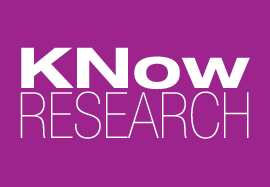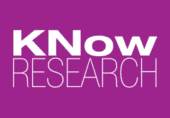The Importance of the Funnel
Clients and researchers alike want to have our cake and eat it too (as I heard recently, why else would you want cake?); we want depth and breadth, scale and efficiency, rich insights and low budgets. One way of getting the best of both worlds is what we at KNow call Funneled Insights. This is very simply starting with a broader data set and narrowing your focus as you move through the fieldwork.
One of the most common ways we do this is to start with a digital qualitative diary study.
- We recruit a broad range of our clients’ hypothesized target audience segment(s) and give them a series of assignments to bring us into their worlds over the course of 3 to 5 days (See Tips for Running a Successful Online Qualitative Study).
- We then set up an interim workshop for our client to absorb the first set of data and decide how to narrow the funnel. What we learn in the first phase determines what we want to learn next and from whom.
- We then invite those participants we want to learn more from to the next stage of research. This can take the form of additional online tasks, a webcam or in-situ interview or a group discussion, any methodology that will allow us to learn more from them.
Clients appreciate this approach because it gives them a larger qualitative set of responses (usually 30-60 from phase 1) followed by a deeper dive into core questions with key audience members (usually 5-20 in phase 2). This allows them to use their budget efficiently by honing in on participants that give them the most insight and spending more time, money and energy with that group. Our team appreciates the approach because we have pre-vetted participants who are already actively engaged and are therefore more likely to participate, and participate meaningfully, in the second phase
A few things to remember when designing Funneled Insights:
- Leave some wiggle room in the project budget; sometimes you don’t know at the outset exactly how many people you will recruit for phase 2 and what the methodology for that phase will be.
- Book your interim workshop ahead of time; set aside time in the team’s busy schedule for a deep dive into the information gathered in phase 1. It’s tricky to leave enough time for phase 1 analysis and client input and still ensure that you are reaching back out to participants soon enough after the close of phase 1 that they are still committed to the project.
- Set clear expectations with your participants; they need to know that they may be chosen for an additional phase of work. Make sure they are interested and available for both phases from the outset but do not assume they will be chosen.
Other ways to design Funneled Insights:
- Start with a quantitative survey and recruit participants in that survey into qualitative fieldwork.
- Use intercept interviews (See “Reviving the Intercept Interview”) to recruit participants into online panels and discussion groups.
What else have you done to start broad and narrow the focus along the way? What benefits have you found from this approach? Contact us and let us know!

